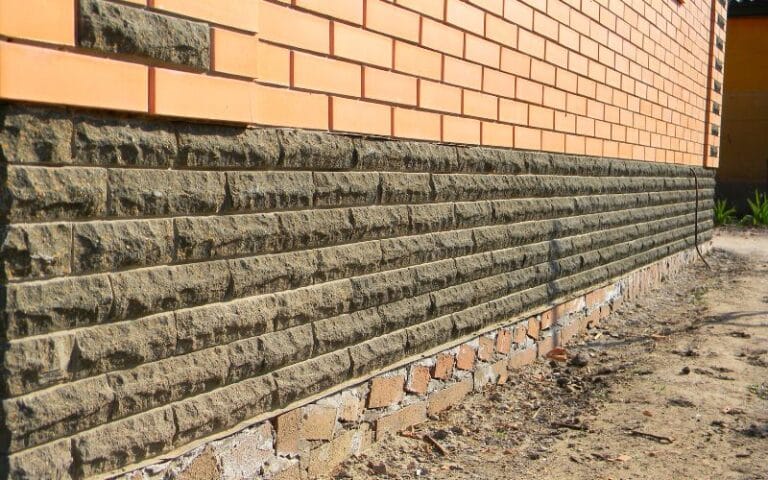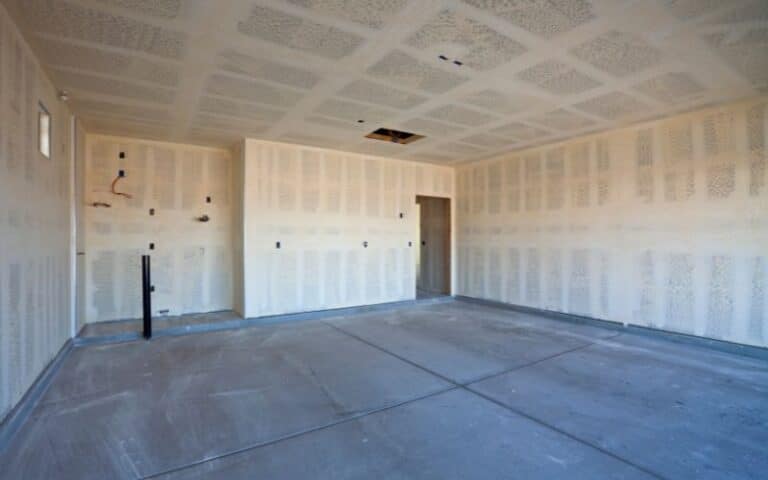You can use drywall to finish surfaces such as walls, floors, and ceilings. To maintain the long-lasting nature of drywalls, you must follow certain precautions.
One of the precautions is that you should use drywalls at a certain level of temperature.
If you are considering using drywall in your garage and have an unheated garage, you may want to know if it’ll be appropriate.
You cannot use drywall in an unheated garage. The reason is that drywalls need some form of warmth and air movement to last long, and an unheated garage cannot provide that. However, you can use devices such as window heat pumps, electric ceiling panels, and space heaters to heat your garage.
In this article, I’ll tell you about the benefits of using drywalls, the various devices you can use to heat a garage, and the temperature drywalls can withstand.
Ready for a Roofing Quiz?
Ready for a Drywall Quiz?
What Kind of Drywall Can You Use In a Garage?

The type of drywall that is best for garages is standard drywall. Standard dry walls are moisture and fire-resistant, just in case you work with flammable materials.
However, you must check your building code for specifications on the drywall to use. Building codes specify the standard measurement for the drywall you should use.
Most building regulations require ⅝ inch thick drywall, and some specify two sheets of ½ inch drywall.
Will a Drywall Last In an Unheated Garage?
No, drywall will not last in an unheated garage. In addition, it might be challenging to use drywall in an unheated garage because it needs some warmth and air movement.
If you need to provide heat to your garage, probably during cold weather, here are ways to go about it:
#1. Gas Garage Heaters
Gas garage heaters are usually attached to the room’s ceiling to circulate heat.
Gas-forced air heaters require some things to function, including a source of fuel, venting outside, natural gas or propane, and access to electricity.
You should always research if your area allows for the installation of forced air heaters in garages.
Only use a gas garage heater if you don’t want to paint with varnishes because the heater blows particles around the room.
A little warning to note if you want to use a gas garage heater is that dust and vapor can easily flow through the ductwork.
Portable electric heaters with coils and grills can cause fire hazards, so you should refrain from using them, mainly when you use many flammable materials in your garage.
#2. Electric Radiant Ceiling Heater
You can easily install an electric radiant heater on your garage ceiling or wall.
Electric radiant heaters could do better to spread the heat around the room efficiently, so install them if you only use one section of the garage.
#3. Ductless Mini-Split Heat Pump
Ductless mini-split heat pumps are perfect for immediately eliminating heat loss in a room. In addition, these are very easy to install as they do not involve any ductwork.
Ductless mini split heat pumps come with a freeze protection mode whereby the pump releases hot air and consumes maximum power to avoid freezing.
These heat pumps are energy efficient and require low energy bills. However, the pumps could be more attractive and more expensive to install.
#4. Window Heat Pump
Window heat pumps are affordable and easy-to-install ductless units. The noise production from these pumps is minimal, and they are very affordable.
You can connect your window heat pump to a window AC thermostat that triggers to maintain humidity and temperature levels in the room.
The downside to a window heat pump is that it can be an eyesore and make the window inaccessible.
#5. Portable Heat Pump
Unlike other heating systems, a portable heat pump does not require any particular installation.
The heat pump starts working once you route the exhaust hose through a hole in the wall and plug it into the switch.
This device comes with wheels for easy movement around the garage. The portable heat pump has an appealing design and consumes minimal energy.
However, the downside of using this heat pump is that it produces a lot of noise and takes up floor space.
#6. Electric Ceiling Panels
The electric ceiling panels are slim panels that are easily installed in your ceiling and do not affect the decor of the garage.
These panels take a few seconds to heat the room, and they are also very energy efficient and do not require supplemental heating.
The cons to using electric ceiling panels are that the panels require a high maintenance cost and uneven heating in the room.
#7. Space Heater
Space heaters are portable and require electricity, propane, natural gas, or kerosene. The device circulates heat in the room by radiating infrared radiation or through convection.
The cons to using space heaters are that they can create less effective than other heating systems and create a fire hazard when knocked over.
#8. Wall-Mounted Electric Heater
Electric heaters are perfect if your garage is small. These devices are easy to install; they are ready for use by just plugging them into the power outlet.
The wall-mounted electric heater does not emit any gases and is, therefore, eco–friendly.
The downside to wall-mounted electric heaters is that they can cause a spike in your electricity bills.
#9. Convection Heater
Convection heaters absorb excellent air and release warm air through convection currents. They usually require electricity, gas, or propane to operate.
The downsides to using convection heaters are that they are not suitable for large spaces and do not have air filters. This makes allergen and dust accumulate.
#10. Infrared Heater
Infrared heaters are the top choice of heating systems as they are very energy efficient.
They circulate heat by emitting infrared radiation and heating nearby objects rather than air.
The heaters are silent when operating and do not dry out the air, unlike forced air heaters which circulate heat by air movement.
The one downside to using infrared heaters is that they stop radiating heat immediately after you turn them off.
Here is a table to show the purchase cost for various garage heaters.
| Heater | Average Cost of Purchase |
|---|---|
| Window heat pump | $1000 |
| Convection heater | $170 |
| Infrared heater | $100 |
There are many advantages to using drywall in your garage. Here are some benefits.
#11. Protection Against Fire
Drywalls contain materials such as crystallized moisture and gypsum. These materials combine to give drywalls their fire-resistant properties.
The fire-resistant property is advantageous when you use it in a garage because of the power tools and activities done in a garage that cause potential fire hazards.
If you know you deal with a lot of automobile work and flammable materials in your garage, then drywalls are best for you.
#12. Noise Reduction
Although drywalls are not perfect soundproof materials, they serve as a means for sound reduction.
This benefit is perfect for garages where a lot of work gets done. If you live that, silence is required, and you do a lot of work that produces a lot of noise.
#13. Improves Visibility and Lighting
The drywall provides maximum visibility and lighting because of the remarkable reflective properties of the bright white surfaces.
The high visibility and lighting properties are perfect in your garage if you do a lot of woke there.
You can also choose to paint the drywalls with a lighter shade of white for enhanced visibility.
What Temperature Can Drywall Withstand?
Drywalls can withstand temperatures of up to 52 degrees. Gypsum makes up most of the drywall.
When gypsum gets heated to a temperature of up to 52 degrees, it starts to experience structural and physical change.
When you heat drywall up to 52 degrees, moisture starts forming. The moisture will start to sip into the drywall.
Once the moisture enters the drywall, the gypsum becomes fragile, starts to crack, and eventually crumbles down.
Do You Need a Membrane Over Drywall In a Garage?
No, you don’t need a membrane over drywall in the garage. A membrane is a vapor barrier that shields walls from getting destroyed by moisture.
For example, the garage is known to be one of the driest places, so it rarely gets moisture.
However, installing a membrane over your drywall will be best if you use your garage for water-related activities. Also, you’ll need a membrane if the weather is constantly freezing.






